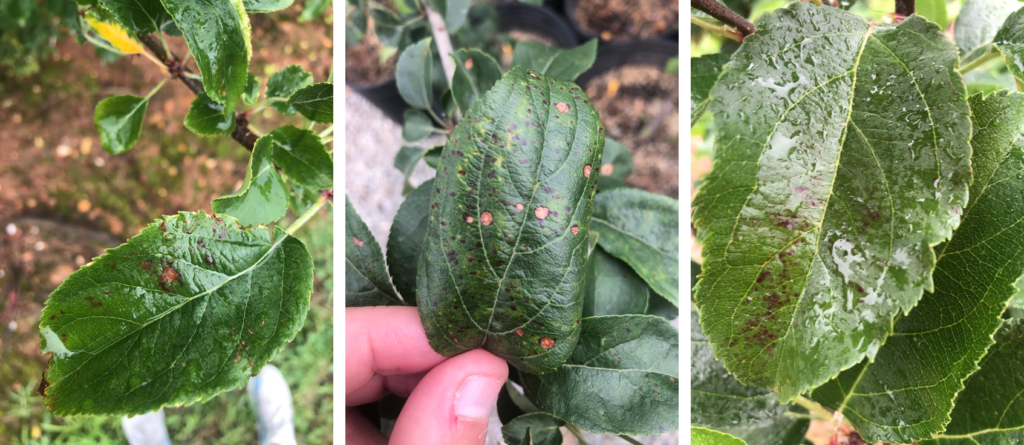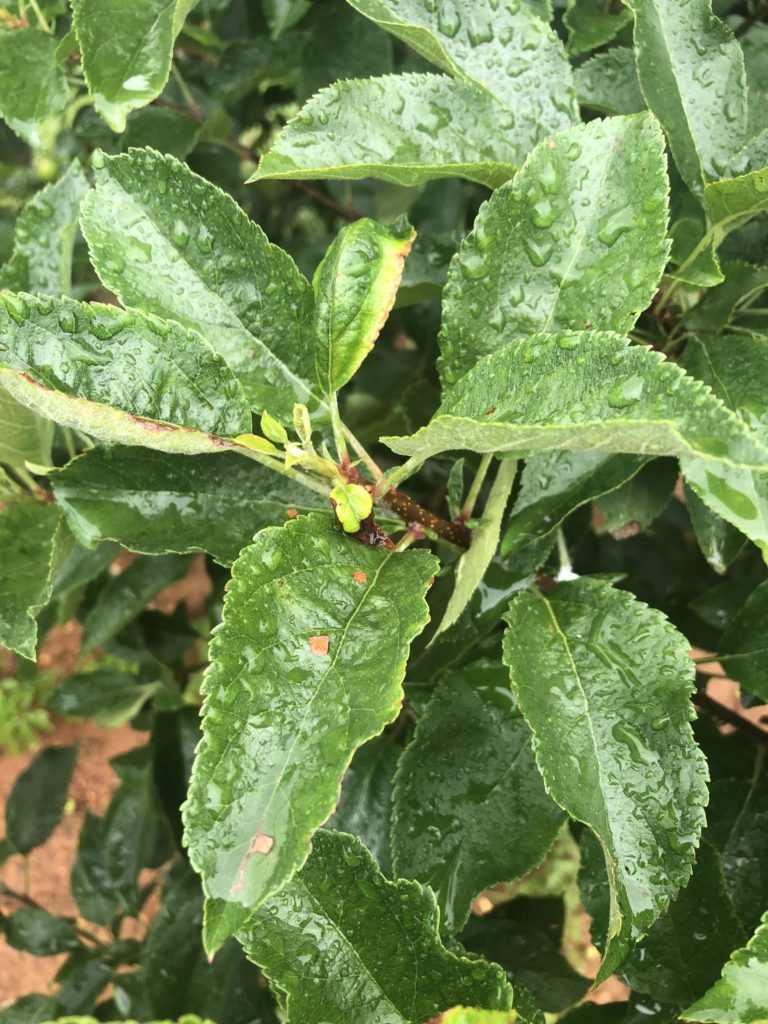Apple Disease Update: June 16, 2020
go.ncsu.edu/readext?701533
en Español / em Português
El inglés es el idioma de control de esta página. En la medida en que haya algún conflicto entre la traducción al inglés y la traducción, el inglés prevalece.
Al hacer clic en el enlace de traducción se activa un servicio de traducción gratuito para convertir la página al español. Al igual que con cualquier traducción por Internet, la conversión no es sensible al contexto y puede que no traduzca el texto en su significado original. NC State Extension no garantiza la exactitud del texto traducido. Por favor, tenga en cuenta que algunas aplicaciones y/o servicios pueden no funcionar como se espera cuando se traducen.
Português
Inglês é o idioma de controle desta página. Na medida que haja algum conflito entre o texto original em Inglês e a tradução, o Inglês prevalece.
Ao clicar no link de tradução, um serviço gratuito de tradução será ativado para converter a página para o Português. Como em qualquer tradução pela internet, a conversão não é sensivel ao contexto e pode não ocorrer a tradução para o significado orginal. O serviço de Extensão da Carolina do Norte (NC State Extension) não garante a exatidão do texto traduzido. Por favor, observe que algumas funções ou serviços podem não funcionar como esperado após a tradução.
English
English is the controlling language of this page. To the extent there is any conflict between the English text and the translation, English controls.
Clicking on the translation link activates a free translation service to convert the page to Spanish. As with any Internet translation, the conversion is not context-sensitive and may not translate the text to its original meaning. NC State Extension does not guarantee the accuracy of the translated text. Please note that some applications and/or services may not function as expected when translated.
Collapse ▲Well Southeastern Apple Growers, it was only a matter of time. This past weekend I observed small purple lesions in our research trial (cv ‘Gala’) and by today, several more lesions characteristics of Glomerella leaf spot were found. Although it is cool outside, the pathogen is still able to germinate and infect with temperatures in the 60s and these extended leaf wetting events. If you have not applied a fungicide your trees in the past 7 to 10 days, I would strongly encourage you to get a cover spray applied to cultivars that are highly susceptible to GLS and bitter rot. Tomorrow (Wednesday) as it looks like there will be occasional breaks in the rain. Even during a misting/light rain like we had today (6/16), applying captan (3/4 to full rate) OR captan (1/2 rate) + ziram (1/2) rate should be effective. Plus the mist could even be advantageous in helping to redistribute the fungicides throughout the canopy.
You may be inclined to add a spreader/sticker to the tank if spraying under light rain conditions. If you’ve had prior experience with a certain adjuvant in combination with captan, and you’ve sprayed that combo under slow drying conditions (e.g. rain, mist, fog, cooler temps) without observing phytotoxicity on the fruit and the leaves, then I won’t discourage you from continuing to do that. Just keep in mind that certain cultivars are more susceptible to chemical injury than others. I would strongly urge you to NOT experiment with new tank mixtures during this weather pattern. In 2019, I presented some research on surfactant/captan injury that Kerik Cox and I had completed while I was a student in his program at Cornell. Sprays were made under misting conditions and temps in the mid-upper 50s on cv ‘Gala’. A picture is worth 1000 words:

Phytotoxicity on ‘Gala’ leaves and fruit following application of Captan 80WDG + Regulaid (left) or application of Captan 80WDG + Li-700 (right).
This is not to say that all adjuvants + captan will cause injury-just be careful and be smart!
If you get the urge to head out to your see if GLS is present in your blocks, early symptoms (purple flecks/spots) can easily be mistaken for other diseases such as frogeye leaf spot, Marssonina leaf blotch, and even Alternaria leaf blotch. Take a look at the photos below for example. The one on the left is early symptoms of Glomerella leaf spot, in the center early symptoms of frogeye leaf spot, and on the right I’m fairly confident it’s early symptoms of Marssonina blotch. As you can tell, the purple spots all look quite similar. What usually helps me at this stage and recognizing the cultivar in which symptoms are occurring and also try to inspect areas of the tree that do not get as much air movement (toward trunk and lower canopy). You may be able to observe more mature symptoms in this region and these are usually more diagnostic of the disease.

Left: Glomerella leaf spot on ‘Gala’; Center: Frogeye leaf spot on ‘Evercrisp’; Right: Marssonina leaf blotch on ‘Rome Beauty’
Lastly, captan by itself is so-so for control of flyspeck/sooty blotch. If you only applied captan or captan/ziram last cover spray, you may want to consider adding thiophanate-methyl (e.g. Topsin) or a DMI (e.g. Inspire Super, Cevya) or ProPhyt into the tank.



